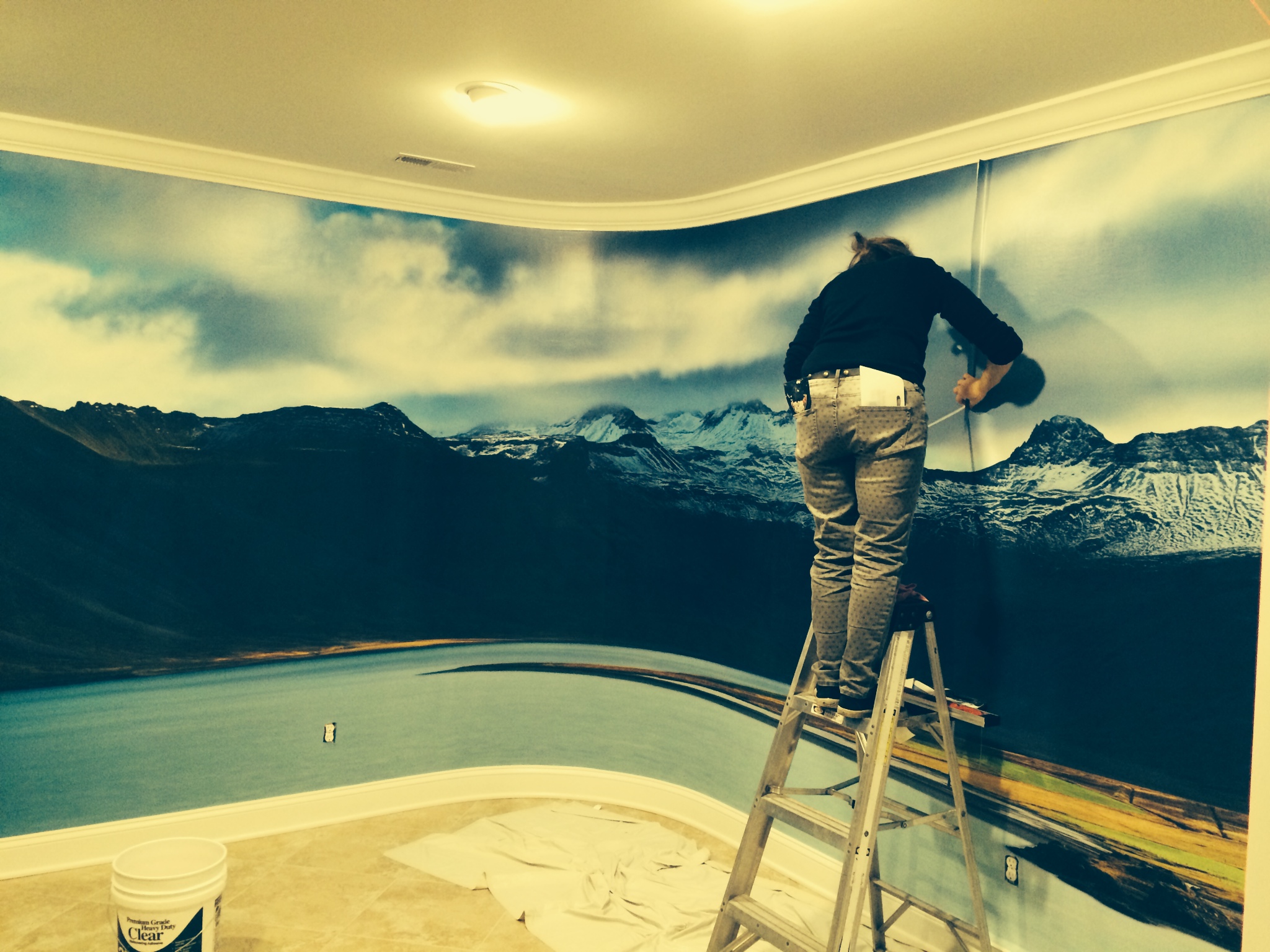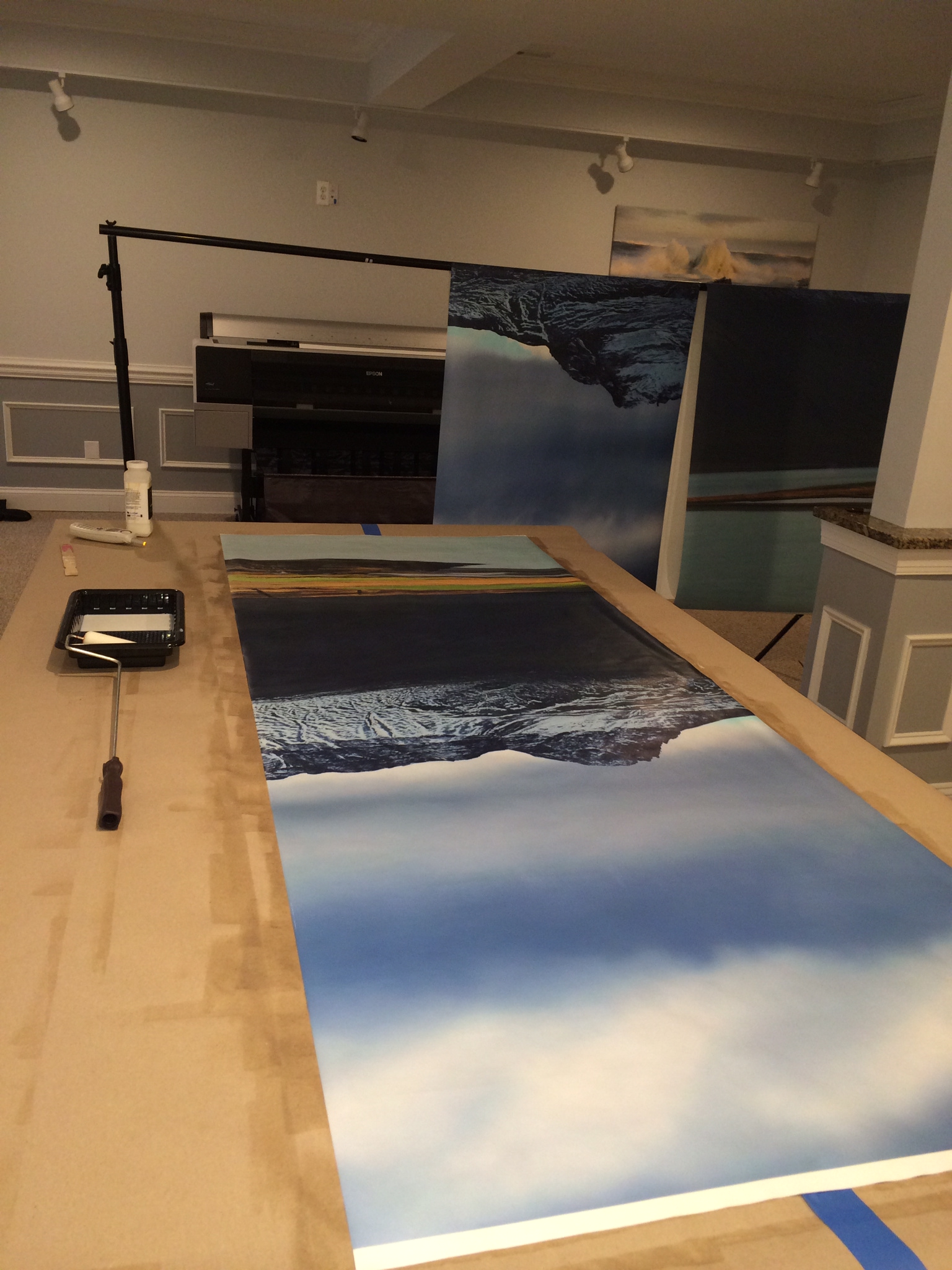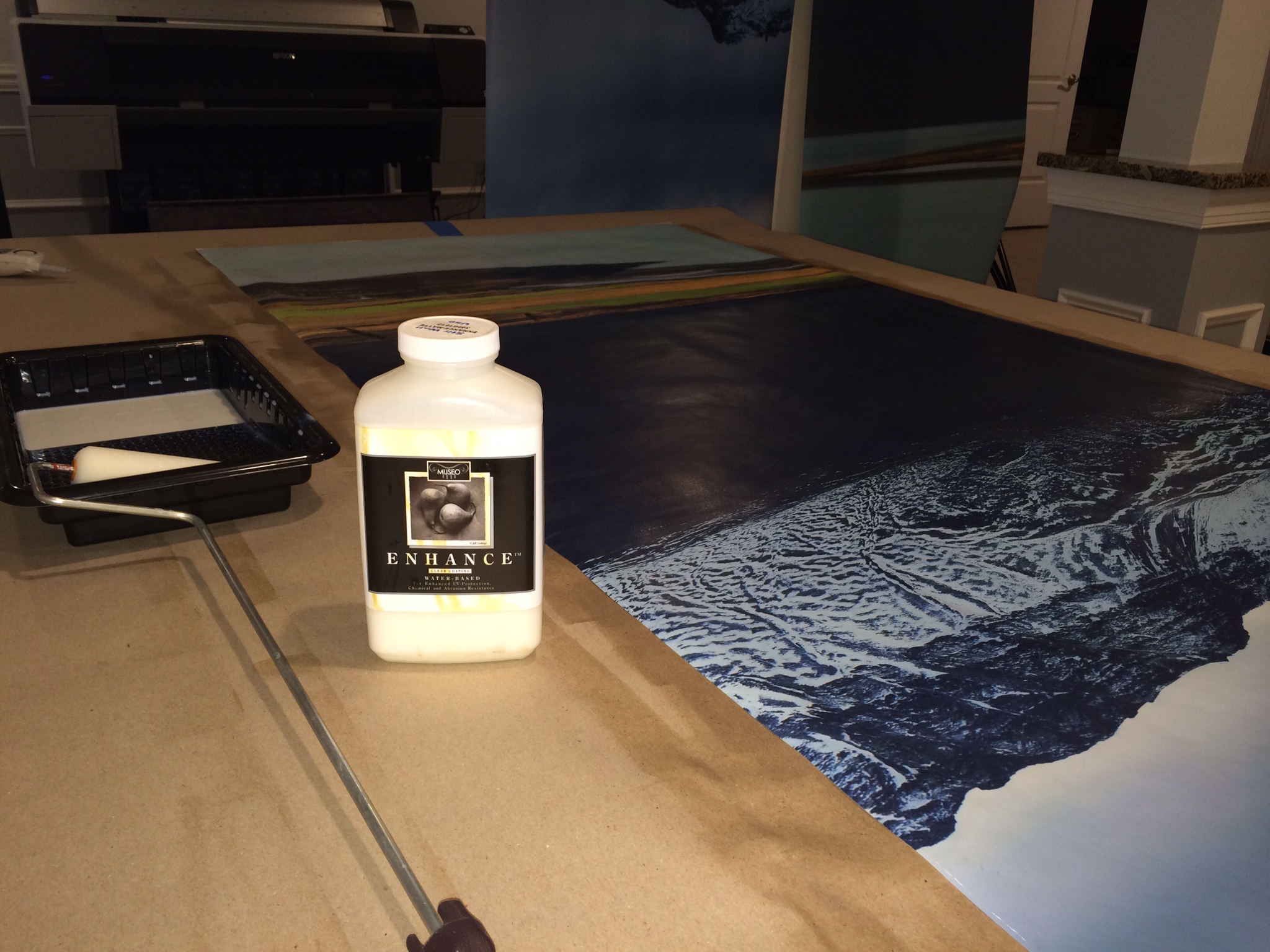
A 28-Foot Wall Mural
Exciting things are happening in my studio. Two weeks ago we printed the wall covering panels for the 28-foot curved space that I had the contractors purpose-build for my studio.
(NOTE: Please excuse the poor quality iPhone images. I forgot to change settings under those lights.)
I spent days agonizing over which stitched image would become the mural we would print and display. I had several candidates lined up, but we decided on a 15-shot, single-row image of a lake and mountain range that I captured last year while in Iceland.
The Process Begins
We started by ordering more wall covering from our supplier, Coveris (formerly Intelicoat Technologies). We regularly use their Museo Fine Art line of photographic paper for our traditional fine art framed images and we love the technical support they provide (thanks, Tina!). We also like their wall coverings for their ability to display crisp blacks, vibrant colors and for their durability. Naturally, the panels also reflect my assistant’s (Bob Boyer) artistic printing techniques and technical wizardry.
Over a couple of sessions we printed out the ten 36" panels (9-feet tall) that comprise the pano (for info on how to shoot a pano see my instructional blog). I then hung them up on studio backdrop rods overnight to dry thoroughly or, as the labs call it, “outgas”.

The next day I coated each panel with Museo’s Enhance, a durable, easy-to-apply coating that resists water, fingerprints, etc. I let the panels dry for a day before applying a second coat. In the background you can see them hanging on my backdrop supports. Also in the background is our Epson 9900 printer that the panels were printed on.

I typically apply the first coat side-to-side and the second coat up-and-down. Once they were all dry I waited anxiously for the wall-covering pros that we use to arrive.
Obstacles Arise
Robin Frye and Phil Osborne have been hanging wall coverings for a bunch of years (I’m reluctant to reveal how many years, because it might give readers a hint of Robin’s age!) and we use them with confidence for all our wall-covering installations.
They had asked me to pre-coat the wall with a wallpaper primer. Unfortunately, the brand I bought at Lowe’s wasn’t up to the task, and when they tried to cut the double-overlaps, the wall coverings pulled the paper off the sheetrock, leaving ragged spaces under the seams. After trying different fixes for hours, Robin and Phil applied their own high-end primer. They then called it a day to allow 24-48 hours for the primer to harden and came back two days later to finish.
On Day 2 the process went smoothly and they were done in a couple of hours. Here is Robin smoothing out some of the air bubbles that form during application.

In an upcoming blog I’ll do a video walk-through of my studio, with better images. I’ll report on an interesting display concept; using a wall-covering mural in a master bathroom.